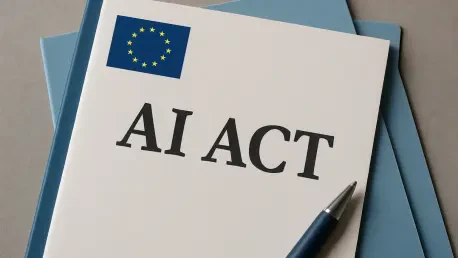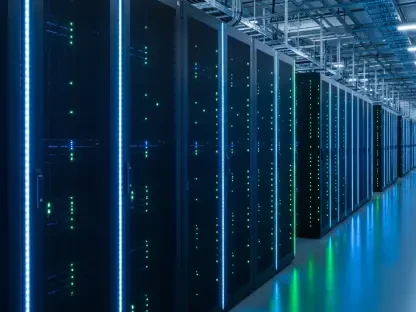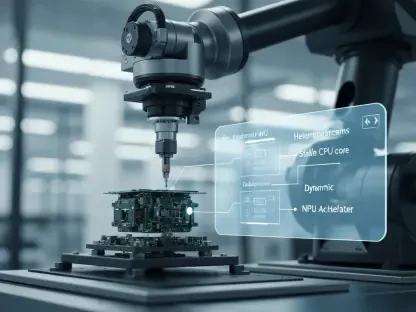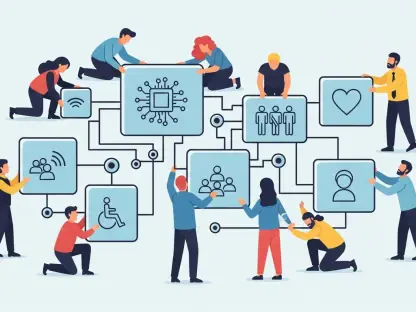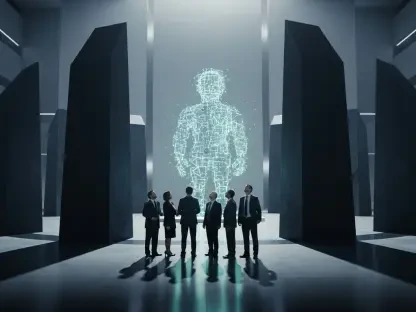The European Union’s AI Act, a pioneering piece of legislation designed to regulate artificial intelligence across the continent, has ignited fierce debate since its enactment on August 1, 2024, with key obligations for AI providers taking effect the very next day. Billed as a framework to harmonize innovation with ethical standards, the Act promised to protect intellectual property (IP) rights, particularly for the creative industries that form a vital part of Europe’s cultural and economic fabric. Yet, a powerful coalition of creative groups—representing millions of authors, performers, publishers, producers, and other rightsholders—has decried the implementation as nothing short of a betrayal. Organizations such as CISAC, ICMP, IFPI, and IMPALA have voiced outrage over what they perceive as a failure to shield their works from misuse by generative AI technologies. As tensions escalate, the clash between technological progress and cultural preservation raises a pressing question: has the EU missed the mark in safeguarding the creators it vowed to support?
Voices of Discontent in the Creative Sector
The creative industries in Europe have not held back in their criticism of the EU AI Act’s rollout, particularly targeting the General-Purpose AI (GPAI) Code of Practice and its accompanying guidelines. At the core of their grievances is Article 53, which was meant to ensure rightsholders could uphold their copyright under EU law. However, the coalition argues that the current framework dismisses their extensive input during the drafting phase, instead prioritizing the interests of AI developers. They point to the rampant practice of “scraping” copyrighted content to train generative AI models, a process they claim inflicts daily harm by undermining fair competition. This perceived oversight has left creators feeling exposed, as the lack of stringent transparency measures around training datasets means they have little recourse to protect their intellectual contributions from exploitation in an increasingly AI-driven landscape.
Adding to the frustration is the sense that the EU has failed to grasp the urgency of the situation facing the creative sector. Beyond the legal intricacies, there is a palpable fear that the Act’s implementation could set a dangerous precedent, allowing tech companies to profit from artistic works without proper accountability. The coalition has been vocal about the need for immediate revisions to the guidelines, arguing that the current setup does little to prevent unauthorized use of their material. This dissatisfaction is compounded by the belief that their role as cultural stewards is being undervalued, especially when generative AI systems can replicate or repurpose their creations with minimal oversight. As these industries rally for stronger protections, their outcry serves as a stark reminder of the delicate balance regulators must strike between fostering innovation and preserving the rights of those who fuel Europe’s creative engine.
Economic and Cultural Pillars Under Threat
The stakes of this regulatory battle extend far beyond legal frameworks, touching on the very foundation of Europe’s economy and identity. The creative industries contribute nearly 7% to the EU’s GDP, a figure that surpasses sectors like pharmaceuticals and automotive, while employing around 17 million people across the continent. These statistics underscore the sector’s role as a powerhouse, not just in financial terms but as a cornerstone of cultural heritage within the Single Market. The coalition of rightsholders has emphasized that failing to shield IP rights from the unchecked use by AI systems risks destabilizing this vital ecosystem, potentially leading to significant job losses and diminished cultural output. Such an outcome could have ripple effects, weakening Europe’s global standing in creative innovation at a time when digital transformation is accelerating.
Moreover, the cultural implications of this regulatory shortfall are profound, as the creative sector argues that their works embody the essence of European diversity and history. When generative AI models exploit these creations without permission or compensation, it erodes the incentive for artists to produce new content, threatening the richness of the region’s cultural tapestry. The coalition has urged the European Commission to recognize this dual economic and cultural weight, pressing for a reevaluation of the AI Act’s enforcement mechanisms. Without swift action, they warn, the damage could be irreversible, not only to individual livelihoods but to the collective identity that these industries sustain. This mounting concern highlights the need for a regulatory approach that prioritizes long-term sustainability over short-term technological gains, ensuring that creators are not left behind in the rush to embrace AI advancements.
Tech Industry’s Divergent Stances on Regulation
The response from the technology sector to the EU AI Act’s implementation reveals a fragmented landscape, complicating the path to a cohesive regulatory framework. On one hand, Google has endorsed the GPAI Code of Practice, expressing optimism about AI’s potential to drive economic growth, with projections estimating an annual boost of €1.4 trillion to Europe’s economy by 2034. This stance reflects a belief that the benefits of AI can coexist with regulatory oversight, provided the rules allow room for innovation. Google’s participation signals a willingness to engage with the EU’s framework, positioning the company as a potential ally in shaping a balanced approach that could, in theory, address some of the creative industries’ concerns while advancing technological progress.
Conversely, Meta has taken a starkly different position, refusing to sign the Code of Practice due to concerns over legal ambiguities and perceived overreach beyond the Act’s intended scope. This rejection underscores a broader unease among some tech giants about the feasibility of complying with the EU’s rules without stifling their operations or facing undue liability. Meta’s pushback highlights a critical challenge for regulators: achieving uniform buy-in from AI providers when their priorities and risk tolerances vary so widely. This divide within the tech industry adds another layer of complexity to the debate, as the lack of consensus among key players could hinder effective enforcement of the Act. As the European Commission navigates these contrasting perspectives, the task of aligning tech innovation with creator protections becomes even more daunting, raising questions about whether a one-size-fits-all approach can truly succeed in such a polarized environment.
Navigating the Divide Between Progress and Preservation
The European Commission finds itself at the epicenter of a contentious struggle, tasked with reconciling the competing demands of technological advancement and cultural preservation. The creative industries have made it clear that they reject assertions of a “fair and workable balance” in the current GPAI Code of Practice, insisting that stronger enforcement of Article 53 is non-negotiable to prevent their works from being exploited by AI systems. Their frustration stems from a perceived sidelining of their interests, as the rapid evolution of generative AI continues to outpace regulatory responses, leaving creators with little control over how their content is used or monetized in this new digital frontier.
This tug-of-war also reflects a broader global challenge in governing emerging technologies without sacrificing foundational sectors like the arts. The Commission’s attempt to mediate between these poles has so far drawn sharp criticism from rightsholders, who feel their economic and cultural contributions are being undervalued in favor of tech-driven growth. Meanwhile, the split reactions from industry giants like Google and Meta suggest that even within the tech sphere, there is no unified vision for how regulation should unfold. This ongoing conflict illustrates the inherent difficulty of crafting policies that keep pace with innovation while ensuring equitable outcomes for all stakeholders. As the debate intensifies, it becomes evident that a more nuanced strategy is required—one that might involve tailored protections for creators alongside flexible guidelines for AI developers to prevent stifling progress.
Charting a Path Forward for Fair Regulation
Looking back, the rollout of the EU AI Act sparked a pivotal moment of reckoning for both the creative and tech sectors, exposing deep rifts that demanded urgent resolution. The fierce backlash from rightsholders underscored a critical lapse in protecting IP amidst the rise of generative AI, while the varied responses from tech companies revealed the complexity of enforcing a unified regulatory standard. Reflecting on this period, it became clear that the initial framework struggled to bridge the gap between fostering innovation and safeguarding cultural assets.
Moving ahead, actionable steps must prioritize revising the GPAI Code of Practice to embed robust transparency around AI training data, ensuring creators can trace and challenge unauthorized use of their works. Additionally, fostering dialogue between the European Commission, creative industries, and tech firms could pave the way for a collaborative framework that addresses legal uncertainties while promoting innovation. Future considerations should also explore tailored incentives for AI providers to respect IP rights, potentially through licensing models that benefit creators. This evolving landscape suggests that only through adaptive, inclusive policies can Europe hope to harmonize the promise of AI with the preservation of its creative heartbeat.
